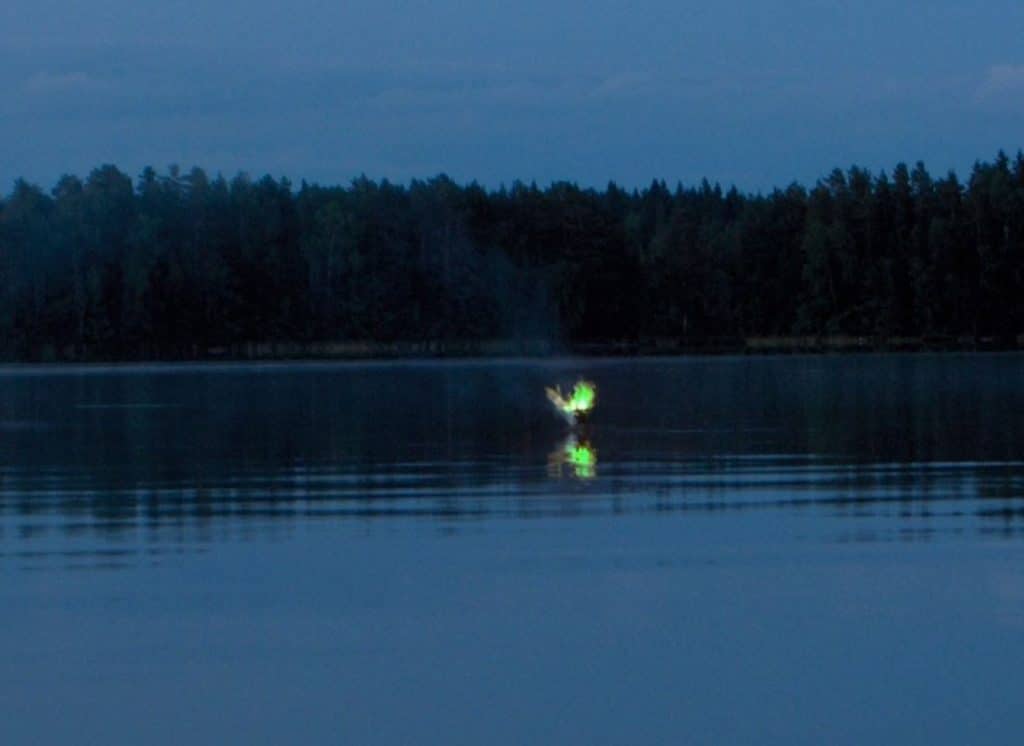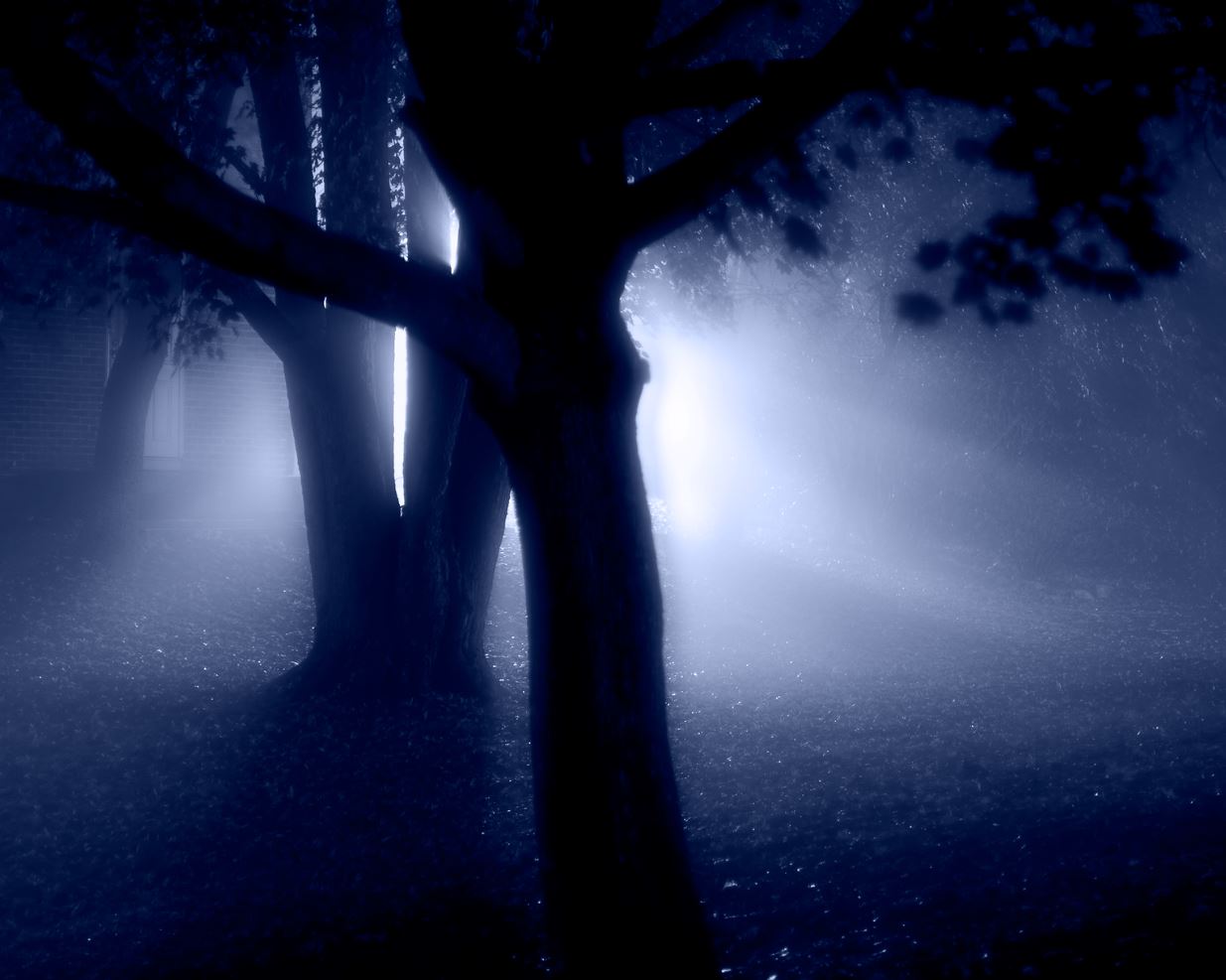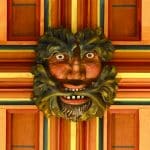Last Updated on 04/06/2025 by Alex Hamlyn
Table of Contents
Where has a Will-o’-the-Wisp been seen?
This article from the East Anglian Daily Times details some of the history in folklore and literature of the strange lights seen around marshes and bogs across the UK.
Will-o’-the-Wisp: The Mysterious Lights of British Mythology
The United Kingdom has long been steeped in folklore and legend and ancient stories whispered across misty moors, shadowy woodlands, and rain-drenched fens. Among the most enduring of these legends is that of the Will-o’-the-Wisp: flickering, spectral lights said to dance across marshes, leading unsuspecting travellers astray.
The will-o’-the-wisp, also known as ignis fatuus or fool’s fire, is a mythical phenomenon in British folklore (and European folklore) that involves ghostly lights seen at night, often over marshy or boggy ground. These ethereal lights are said to lead travelers astray, causing them to become lost in the wilderness.
The earliest recorded accounts of will-o’-the-wisps can be traced back to the 12th century when English chronicler William of Newburgh documented these strange lights in his writings.
Known for his work “Historia rerum Anglicarum” (History of English Affairs), William of Newburgh was a prolific historian who meticulously detailed the events and phenomena of his time. His mention of “foolish fires” is considered to be one of the first written records of will-o’-the-wisps in British history.
In his accounts, William of Newburgh described the will-o’-the-wisps as elusive, flickering lights that seemed to appear and disappear at random in the night. He attributed these lights to supernatural forces, suggesting that they were the work of mischievous spirits or otherworldly beings.
His writings on will-o’-the-wisps inspired further curiosity and speculation, as people attempted to make sense of these strange apparitions that led many travelers astray in the darkness. William of Newburgh’s accounts of will-o’-the-wisps not only laid the foundation for future folklore and legends surrounding these mysterious lights but also sparked an ongoing fascination with the phenomenon.
To readers of a certain age, the Will-o’-the-Wisp is most well known from its eponymous adventures on the BBC animated show which originally aired in 1981. British acting legend Kenneth Williams actually voiced all the characters on the show, including the scary television set Evil Edna!
Supernatural Connections and Sightings
The will-o’-the-wisp has long been associated with supernatural beings, particularly fairies and spirits. The Will-o’-the-Wisp is traditionally described as a faint, ghostly flame seen at night, hovering over bogs, marshes, or lonely moorland. The phenomenon is almost always linked to isolation and disorientation. Those who follow the lights, hoping to find guidance or treasure, often end up lost—or worse.
In English folklore, these lights are often thought to be the work of mischievous fairies, who use their magical powers to lure travelers off their paths. Similarly, in Scottish and Irish mythology, the lights are attributed to spirits or ghosts, which are believed to be the souls of the dead, guiding or misleading the living.
In British tales, the Wisp is more than a trick of the eye. It’s often portrayed as a sentient, even malevolent force, drawing wanderers into danger with almost playful malice.
There have been numerous reported sightings of will-o’-the-wisps throughout the centuries. One famous example is the account by English naturalist Gilbert White, who, in his book “The Natural History of Selborne” (1789), described the phenomenon as “an appearance of a body of cold fire” that moved across a marshy meadow.
While there is no direct connection between the two, the mischiveous spirit of the character Puck, from William Shakespeare’s play “A Midsummer Night’s Dream” certainly embodies the capricious nature of the Wisp mythology. Puck is a mischievous sprite or fairy, known for playing pranks on humans and causing confusion.
Although there are no definitive photographs or videos of will-o’-the-wisps that are widely accepted as genuine. However, with the advent of modern technology and the proliferation of smartphones, there have been some claims of photographic or video evidence capturing these elusive lights. The authenticity of these images and videos is often debated, and they have not been conclusively proven to depict will-o’-the-wisps.
Where has a Will-o’-the-Wisp been seen?
This article from the East Anglian Daily Times details some of the history in folklore and literature of the strange lights seen around marshes and bogs across the UK.

Etymology of Will-o’-the-Wisp
The term Will-o’-the-Wisp itself means “Will of the Torch”—a folkloric figure carrying a light, forever just out of reach. Similar names include Jack-o’-Lantern in England, Spunkie in Scotland, Ellylldan in Wales, and Gentleman Jack in Northern Ireland.
Wisp folklore around the British Isles
The legend of the Will ‘o the Wisp is not simply a local phenomenon like some fairy tales. These myths and folklore come from all around the UK.
Will-o’-the-Wisp in England
In East Anglia, the will-o’-the-wisp is known as the Lantern Man or Jack-o’-Lantern. In these stories, the light is said to be carried by a mischievous spirit who leads travellers astray in the marshlands.
One tale tells of a man who tried to outsmart the Lantern Man by following the light but keeping his distance. Unfortunately, he still lost his way and became trapped in the marsh, eventually escaping only when the sun began to rise.
Will-o’-the-Wisp in Northern Ireland
In Northern Irish folklore, will-o’-the-wisps are known as fairy lights or “Gentleman Jack.” They are often associated with spirits or fairies who lead travellers off their paths, particularly in the vicinity of ancient sites or fairy forts.
One story tells of a man who encountered Gentleman Jack near a fairy fort, and the light led him deep into the woods. He was only able to find his way back by following the sound of a river, which eventually led him to safety.
Will-o’-the-Wisp in Scotland
In Scottish folklore, the will-o’-the-wisp is known as the “Spunkie” or “Teine Sith.” It is said to be a mischievous spirit or fairy that appears as a light, luring travellers away from the safety of the path.
A tale from the Scottish Highlands tells of a traveller who encountered a Spunkie on a dark night. The man decided to follow the light but soon realized he was being led towards a steep cliff. Fortunately, he stopped just in time and managed to find his way back to the path after the light disappeared.
Will-o’-the-Wisp in Wales
In Welsh folklore, the will-o’-the-wisp is referred to as the “Ellylldan” or “Pwca.” These lights are believed to be the work of mischievous fairies or spirits, often appearing near marshy or boggy areas.
One story from Wales recounts a farmer who encountered the Ellylldan while walking home late one night. The light led him further and further from his intended path until he found himself lost in the wilderness. Eventually, the light disappeared, and the farmer managed to find his way home by following the distant sound of a church bell.
Unraveling the Mystery: Scientific Explanations
While the idea of magical fairies and wandering spirits may be appealing to our sense of wonder, there are several scientific explanations for the phenomenon of will-o’-the-wisp.
One such explanation is bioluminescence, a natural process whereby living organisms produce light through a chemical reaction. Certain types of fungi, bacteria, and insects are known to emit bioluminescent light, which could be responsible for the eerie glow seen in marshy areas.
Another possible explanation for the will-o’-the-wisp phenomenon is the oxidation of phosphine, diphosphane, and methane gases, which are naturally produced by decaying organic matter in marshy environments.
When these gases come into contact with oxygen, they can spontaneously ignite, producing a short-lived, glowing flame. This chemical reaction is known as chemiluminescence and could account for the fleeting nature of will-o’-the-wisp sightings.
A third scientific explanation for the will-o’-the-wisp phenomenon is the occurrence of piezoelectricity, which is the electric charge that accumulates in certain solid materials, such as crystals, when subjected to mechanical stress or pressure.
In the context of will-o’-the-wisp sightings, it is theorized that tectonic stresses and movements within the Earth’s crust could cause the piezoelectric effect in rocks, particularly those containing quartz. This stress could generate a localized electrical discharge, which then ionizes the surrounding air and creates a visible, glowing light. The resulting light, which would be a brief and fleeting occurrence, could be misinterpreted as a will-o’-the-wisp by an observer.
Although piezoelectricity is a less common explanation for will-o’-the-wisp sightings compared to bioluminescence and chemiluminescence, it demonstrates the variety of natural and scientific phenomena that could potentially account for these mysterious lights in folklore and legend.
Strange Phenomena in the British Isles
The British Isles are home to a wealth of other strange phenomena and mysterious occurrences. Some examples include:
- The Beast of Bodmin Moor: A large, black cat-like creature has been reported in Cornwall, England, since the 1970s. While some believe it to be a surviving population of wild cats, others speculate that it could be an escaped exotic pet or simply a case of mistaken identity.
- The Loch Ness Monster: This legendary creature, affectionately known as “Nessie,” is said to inhabit the deep waters of Loch Ness in Scotland. Despite numerous sightings and a few inconclusive photographs, no definitive evidence has been found to confirm the existence of this elusive beast.
- The Mysterious Lights of Wales: Known as the “Welsh Triangle” or “Broad Haven Triangle,” this area in Pembrokeshire, Wales, has been the site of numerous UFO sightings and strange occurrences since the 1970s. Locals and visitors have reported seeing unexplained lights in the sky, strange creatures, and even encounters with beings from other worlds.
- The Fairies of Northern Ireland: In the lush countryside of Northern Ireland, there are countless tales of fairy encounters and supernatural happenings. One such location is the Ballynoe Stone Circle, an ancient site steeped in mythology, where fairies are said to dance on moonlit nights. Locals often leave offerings to the fairies in hopes of good fortune or to ward off misfortune.
- The Green Children of Woolpit: In the 12th century, two mysterious children with green-tinted skin were found in the village of Woolpit in Suffolk, England. According to legend, they spoke an unknown language and claimed to come from a land of perpetual twilight. Their story has been the subject of much speculation, with theories ranging from extraterrestrial origins to a rare genetic condition causing the green hue of their skin.
As we explore the fascinating world of British folklore and mysterious sightings, it’s still important to approach these tales with a sense of curiosity and a willingness to question the evidence. While some phenomena can be explained through natural processes or scientific investigation, others continue to elude explanation, leaving us with ever deeper mysteries.
Embracing the Unknown: The Allure of Folklore
The British Isles are steeped in a wealth of folklore, legend, and mythology that reflect the region’s enduring relationship with the supernatural. By delving into the stories and unexplained phenomena of these lands, we can gain insights into the human desire to find meaning and understanding in our surroundings, particularly when faced with the unknown.
One aspect of this quest for meaning is the phenomenon of pareidolia, a psychological tendency to perceive recognizable patterns or meaningful images in random or ambiguous stimuli. This cognitive process may play a role in shaping the way we interpret unexplained phenomena, as our minds naturally seek to impose order and familiarity on the mysterious or inexplicable.
As we continue our exploration of the enigmas of the British Isles, we may uncover connections between pareidolia and the enduring allure of supernatural tales. For instance, the appearance of a will-o’-the-wisp might be explained by pareidolia, as an observer’s mind interprets a fleeting, unexplained light as the work of fairies or spirits.
Similarly, sightings of mythical creatures such as the Loch Ness Monster or the Beast of Bodmin Moor may be influenced by pareidolia, as our brains attempt to make sense of ambiguous shapes or shadows in the natural world.
While we may never find definitive answers or explanations for every mysterious occurrence within the British Isles, our curiosity and fascination with these enigmas will continue to inspire new discoveries and a deeper appreciation for the extraordinary world around us. The interplay between unexplained phenomena, folklore, and pareidolia highlights the complexity of the human mind and its capacity to create meaning from the unknown.
By recognizing and embracing this aspect of our nature, we can better understand the mysteries that captivate our imaginations.
Until then, watch your step at night, and stay on the path!
Image credits
- Fake Wisp image – https://www.flickr.com/photos/98701585@N02/9351597736
- Foggy Forest – https://www.flickr.com/photos/cayusa/2029538502
Both images used under Creative Commons Licence
References
- https://www.mysteriousbritain.co.uk/folklore/will-o-the-wisp/
- https://en.wikipedia.org/wiki/Will-o%27-the-wisp
- https://en.wikipedia.org/wiki/Atmospheric_ghost_lights
- https://web.archive.org/web/20090725120148/http://jeff.lindell.home.comcast.net/~jeff.lindell/Ignis%20Erraticus.html
- https://www.youtube.com/watch?v=FcNUxb_4qbo
- https://en.wikipedia.org/wiki/Puck_(folklore)
- https://books.google.co.uk/books?id=KtcYAQAAIAAJ&pg=PA392&redir_esc=y#v=onepage&q&f=false
- https://explorersweb.com/natural-wonders-will-o-the-wisp/
- https://royalsocietypublishing.org/doi/10.1098/rsta.2014.0206
- https://www.eadt.co.uk/news/21409275.weird-suffolk-ghostly-lights-syleham-tempt-travellers-treacherous-water/




